SEC form Generation
Easily generate SEC forms for company insiders.
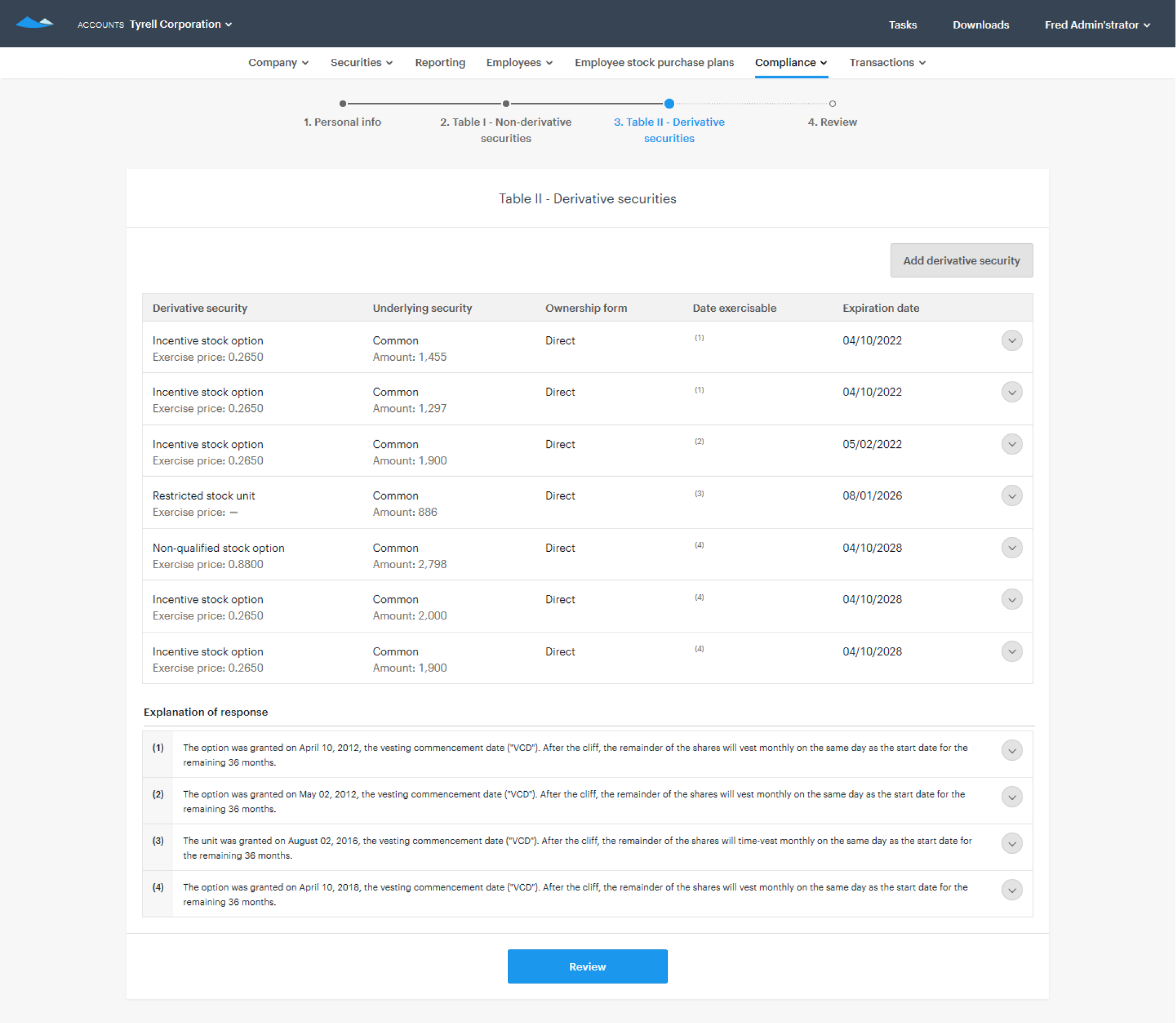
One step of a four-step workflow to generate a complex SEC form.
Overview
Carta is a B2B SaaS company that helps companies and investors manage their cap tables, valuations, investments, and equity plans.
Some front-end code
Gathering product requirements
Wireframing
High-fidelity prototypes
User flows
2 Product Designers
4-5 Engineers
1 Product Manager
Legal and Compliance team
Design technology team
For this project, we looked at opportunities to improve our newly introduced Public Markets product offering. The team did this by examining the unique needs and responsibilities of public companies.
One thing we discovered was the process of filing forms to the SEC on behalf of company insiders, an annoying but legally required task that public companies tend to outsource.
These forms report on the equity transactions of company insiders to ensure they are not unfairly benefitting from their insider status. Once reported, the trade information is made public on the SEC website.
We created the SEC Forms feature to speed up and simplify the process of completing and filing the forms.
Problem
Completing and filing SEC forms is a costly and time-sensitive process.
These forms need to be filed quickly and accurately. For example, Form 4 must be filed within two business days of an event, such as a sale of stock, with the complete details of the transactions that occurred.
Because of the cumbersome and time-sensitive nature of the filing process, the work is often outsourced to a third party, which costs additional resources.
On top of that, it takes time to gather the relevant information for the forms. When outsourcing, there is often back and forth communication between a company and the third party to communicate the required form information. Failure to submit the correct forms before deadlines can result in investigation and punishment from the SEC.
Process (highlights)
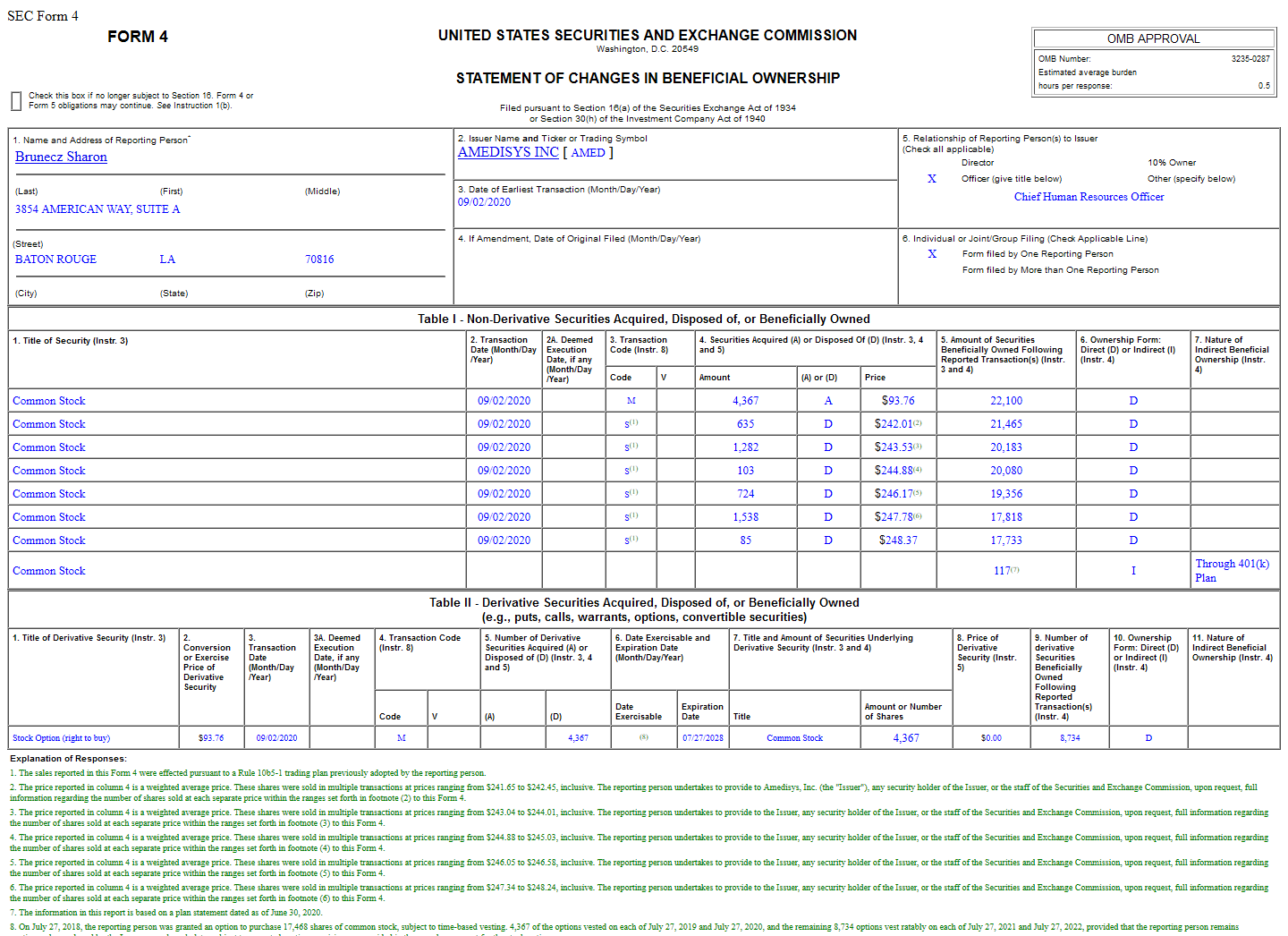
A completed and submitted SEC Form 4
Research
I spent time researching the form completion and filing process to understand how it is normally done and searched for ways to make it easier. It was helpful to talk to people at Carta who filed these forms themselves to get additional context.
It also helped to look at real examples of filled SEC forms to get an understanding of what they look like in their end states. Filled forms are made available to the public so I was able to find many examples online.
Discovery: Electronic filings were most common
Through my research, I learned that most people filed these required forms electronically, through an SEC website. The submitted forms needed to be in XML file format.
Discovery: "Explanation of responses" were time-consuming to write
I learned that a particular part of the forms, explanation of responses, took a lot of time to write. These explanations are used for complex answers to parts of the form that aren't easily summed up with a simple date or number.
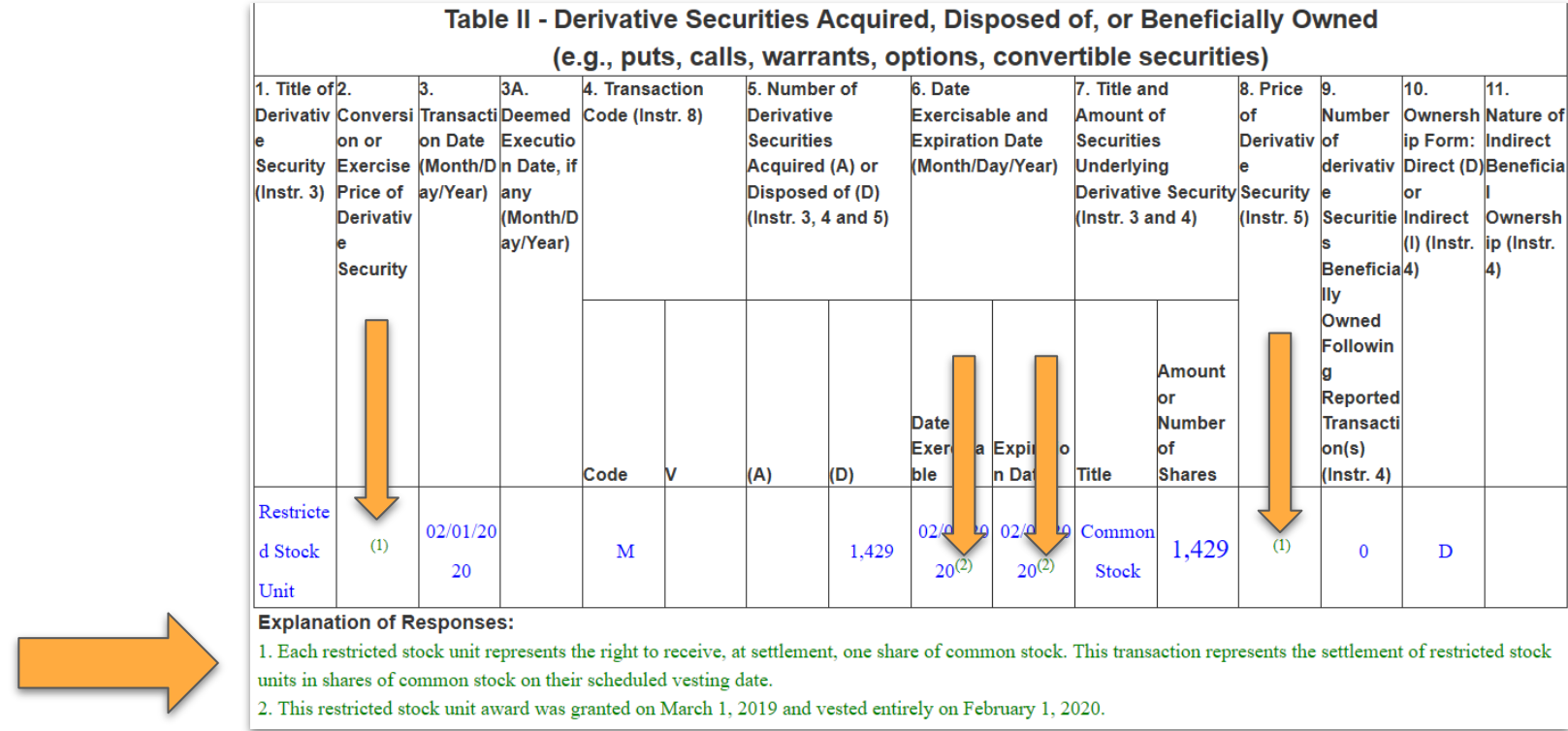
Explanations of responses used on an SEC Form 4
Solution
Support the user in completing forms by populating forms with relevant data on Carta.
With our solution, company administrators can go through a simple workflow to fill and edit forms. The forms are pre-filled with relevant data to reduce the amount of time spent gathering and inputting information that Carta already holds.
Design decisions
I designed a multi-step form to make the filing process easier by addressing problem areas in the existing process.
Multi-step form: I broke the form up into multiple steps to reduce its cognitive load. This helps the user focus on a single or small group of inputs in a step-by-step manner, as opposed to facing a single, large, intimidating form.
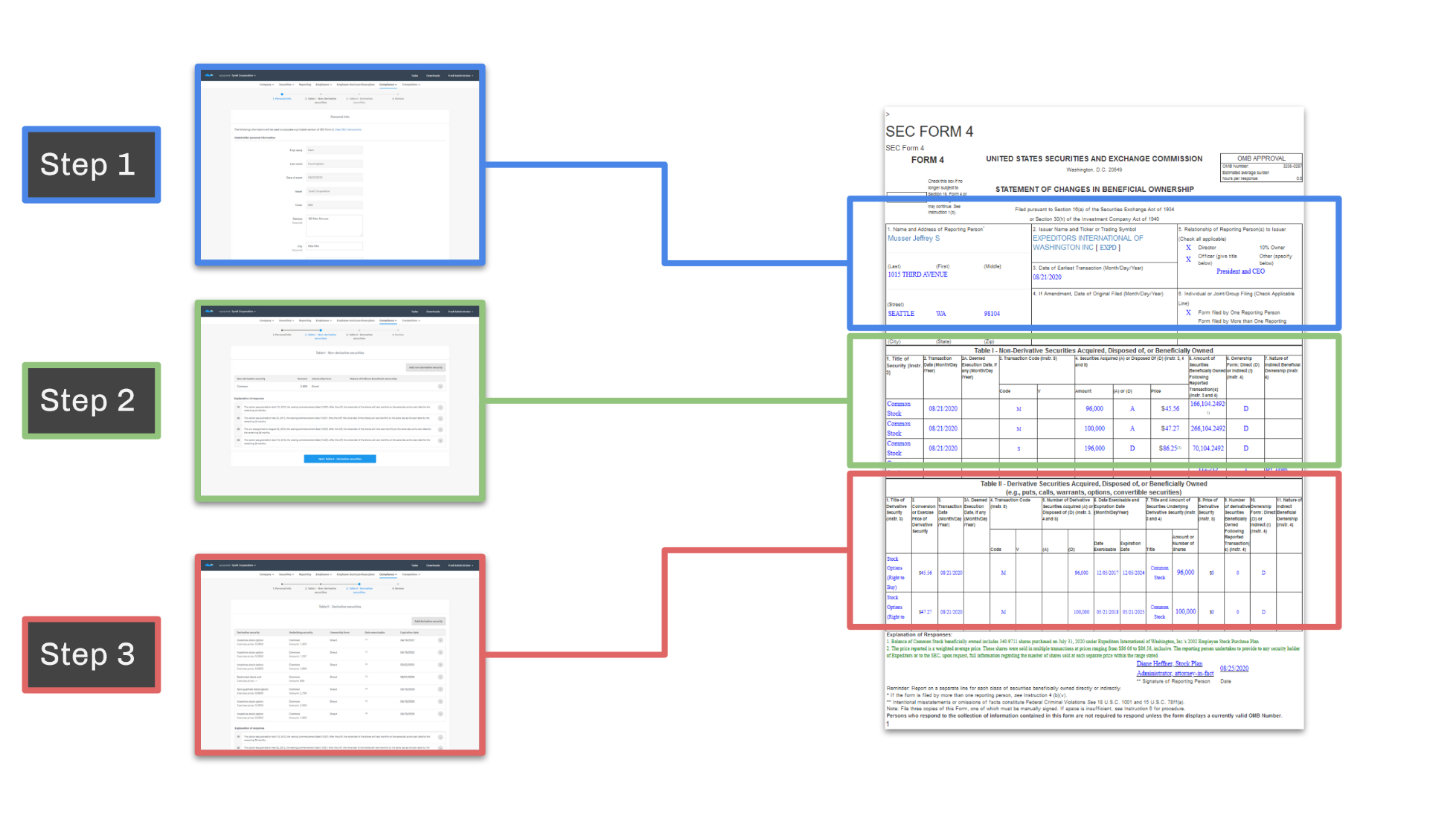
The Carta form's structure and steps mirror the sections of the paper form.
Pre-fill relevant information: Carta holds a lot of information relevant to the forms, including personal information, securities held, and records of transactions.
To make completing the forms easier, Carta pre-fills it with the information already on the platform. Rather than filling it out from scratch, the user has a much easier starting point.

One step of the four-step form workflow. Relevant information from Carta is automatically filled by Carta.
Dynamic, pre-written explanations of responses: I worked with some of our form experts to create explanations that we can generate for the user based on Carta data.

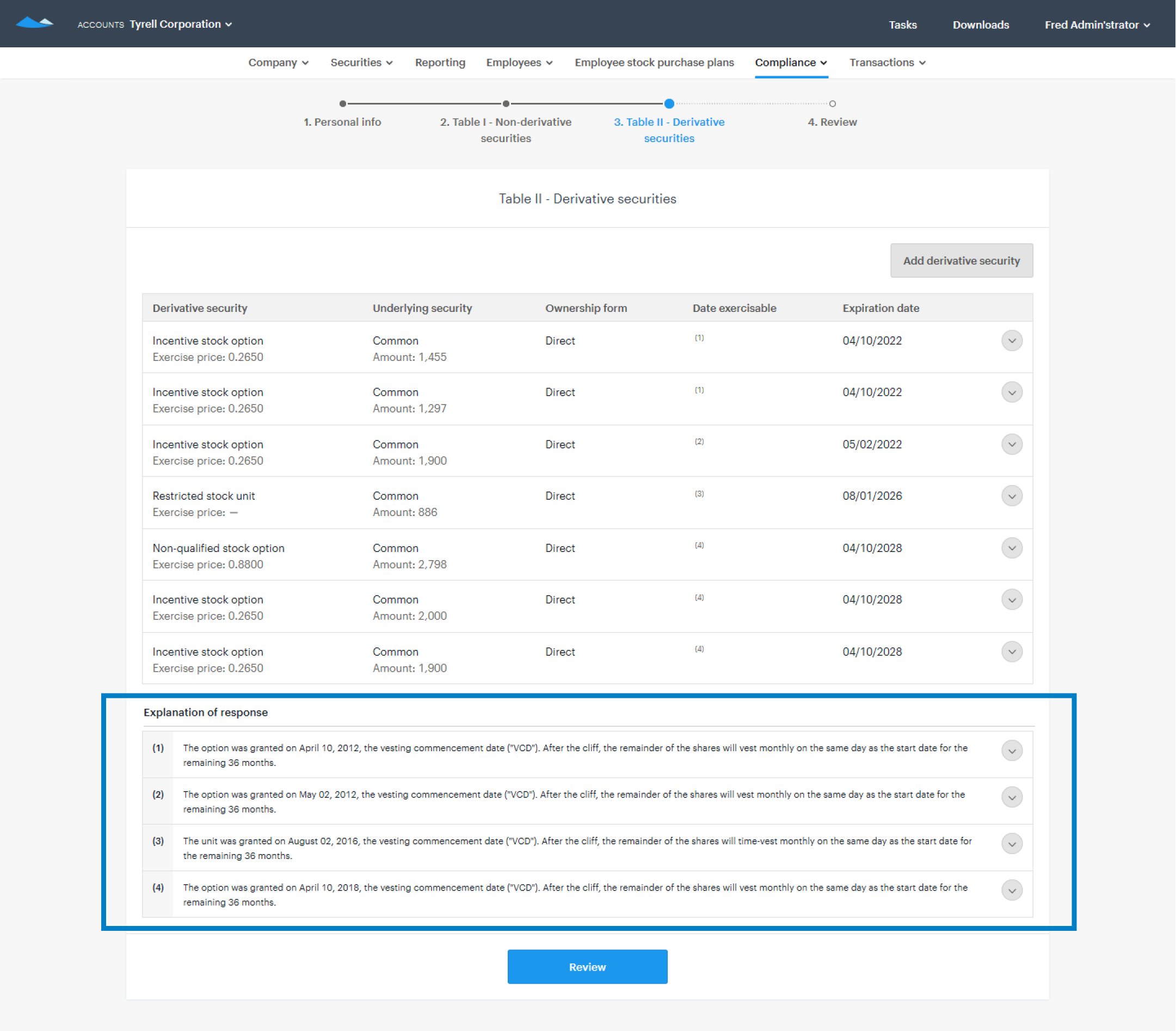
Carta displays pre-written explanations of responses based on relevant user data like "date exercisable"
These explanations often require long, hand-written sentences. The explanation Carta generates is dynamic and based on the specific information about an insider's holdings. This function assists the user in filling out one of the most complex parts of the form.
Upon completing this workflow, users can preview and export their filled form in XML format to submit to the SEC.
Outcomes
• Public company insiders generated 570 forms
• Launched a beta feature with 3 public company customers
• Beta functionality:
• SEC forms 3 and 4 are pre-filled with Carta data. Users can refine and edit the forms in-app.
• Preview and download forms in XML format for submission to the SEC.
• Track the filing status and dates of their forms in-app.
Reflection
I'm happy we were able to build and ship this in the time we had. Learning about the approach to the real-life processes of form filing made it easier for me to see the opportunities for improvement. It was helpful to look at how the forms are typically handled to understand the types of design decisions that would significantly improve the process for the user.